Abstract
1. No evidence was found of a `postural reflex' in ducks. Neither the position of the head nor the water temperature affected the cardiac response to diving.
2. In ducks with access to air through a tracheal cannula, submersion did not invariably cause apnoea until the water level reached the glottis. Heart rate was closely related to respiratory frequency, and bradycardia did not occur during submersion unless there was a reduction in respiratory frequency or a cessation of ventilation altogether.
3. When apnoea and bradycardia did occur during submersion, the first inspiration upon surfacing was 2-3 times larger than normal and was accompanied by an instantaneous rise in heart rate.
4. Atropinization or cold block of the vagus abolished diving bradycardia. Only one vagal trunk was involved in cardiac chronotropic control at any one time. This vagal trunk also appeared to be more important in control of respiratory frequency.
5. β-adrenergic receptor blockade did not affect either diving bradycardia or post-dive tachycardia.
6. The results show that the cardiac chronotropic response both during and after submergence is controlled solely by changes in parasympathetic vagal activity.
Full text
PDF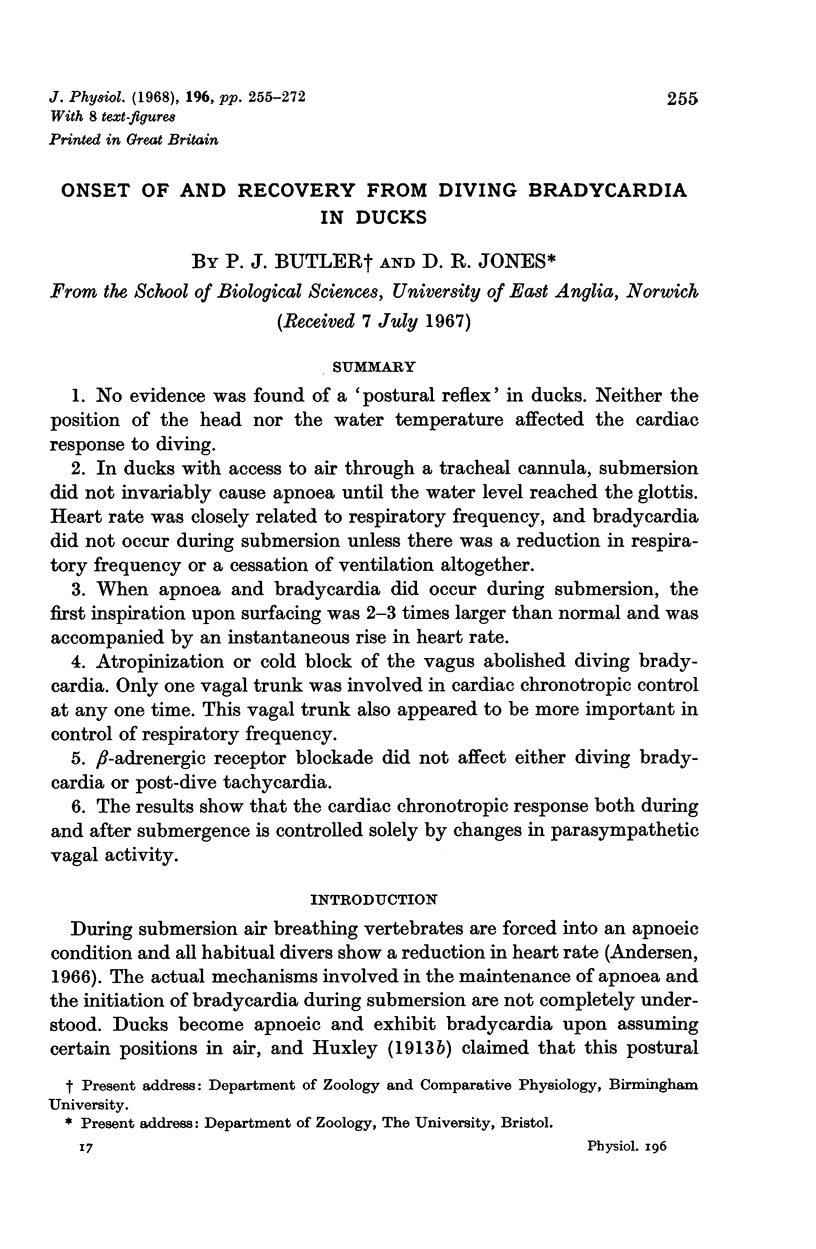

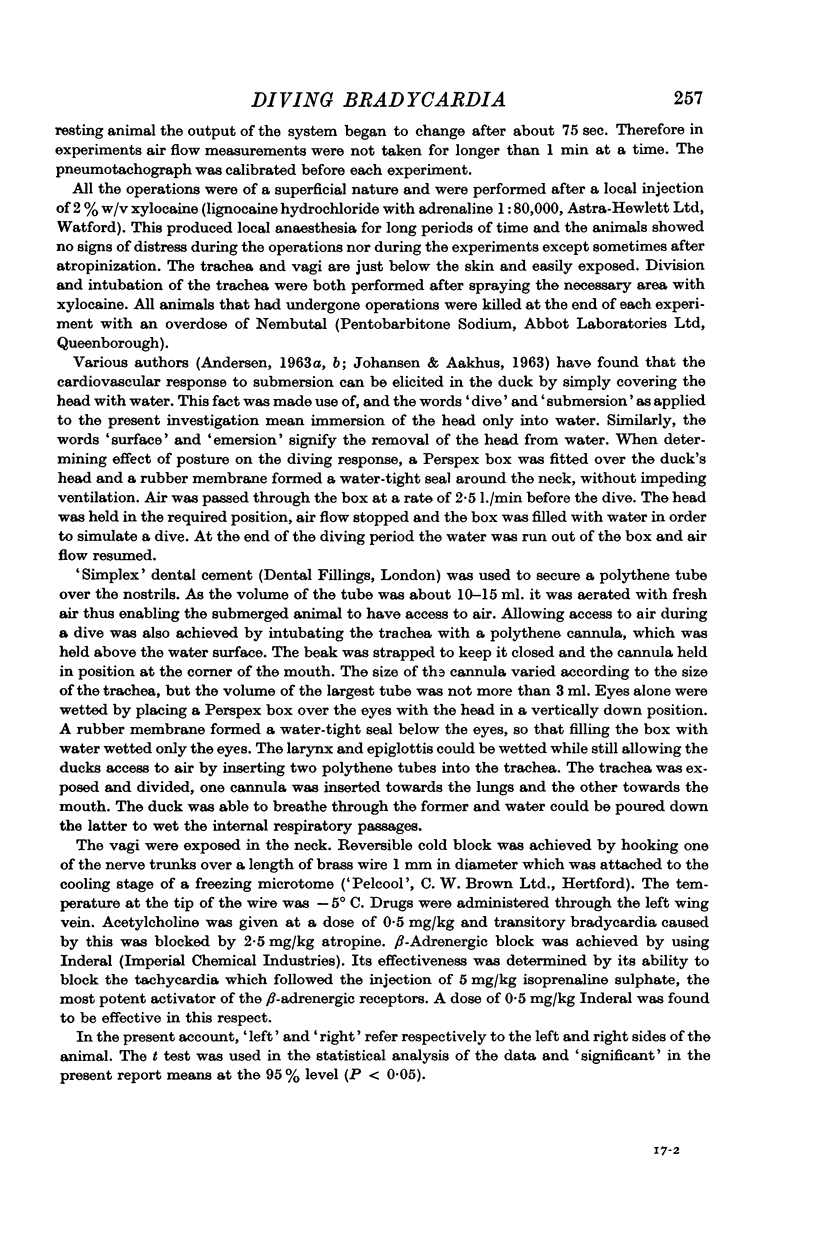






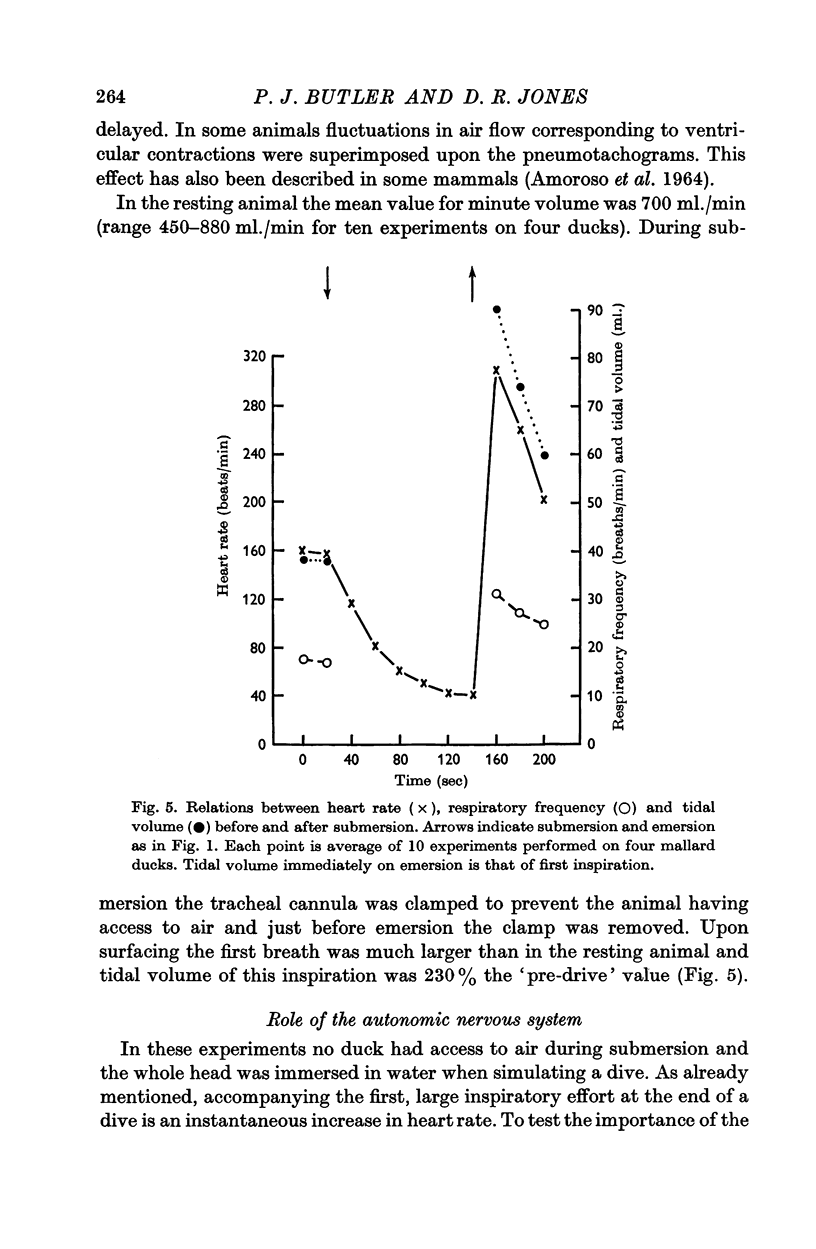

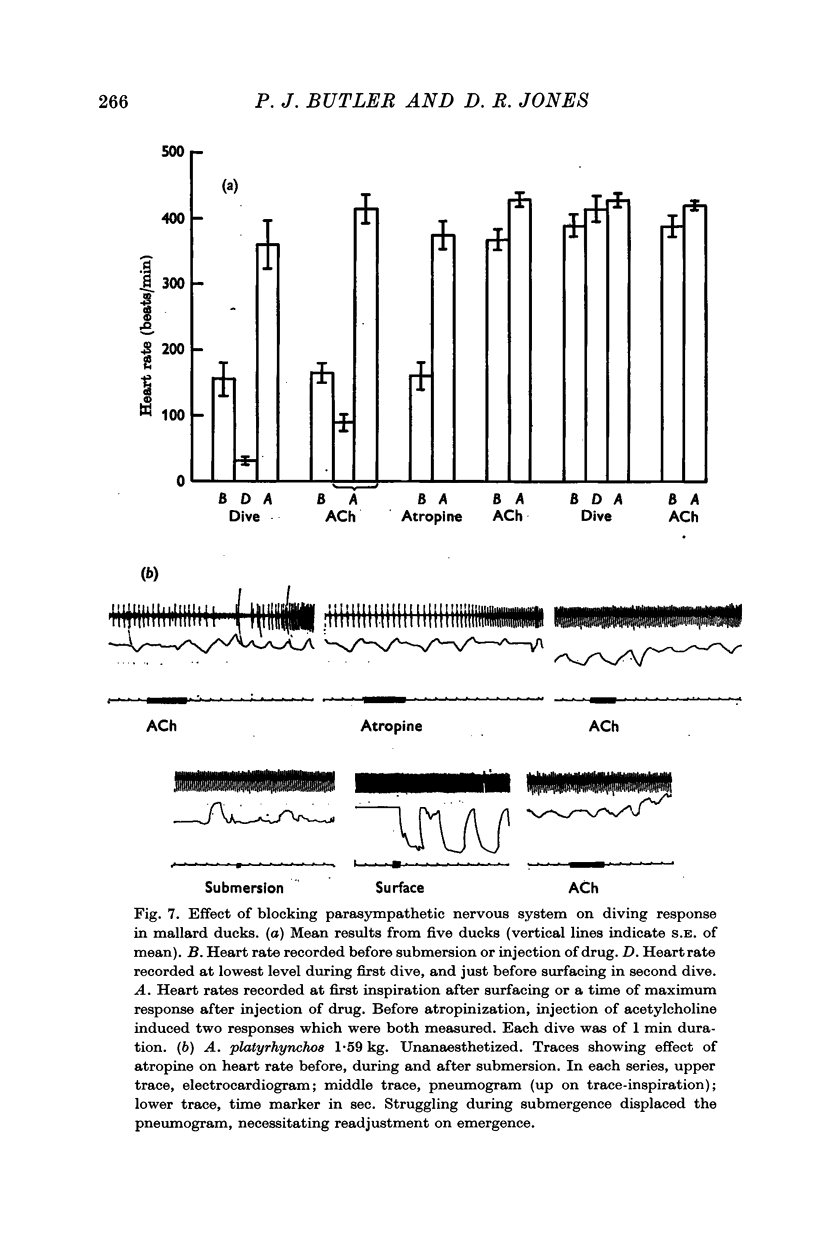
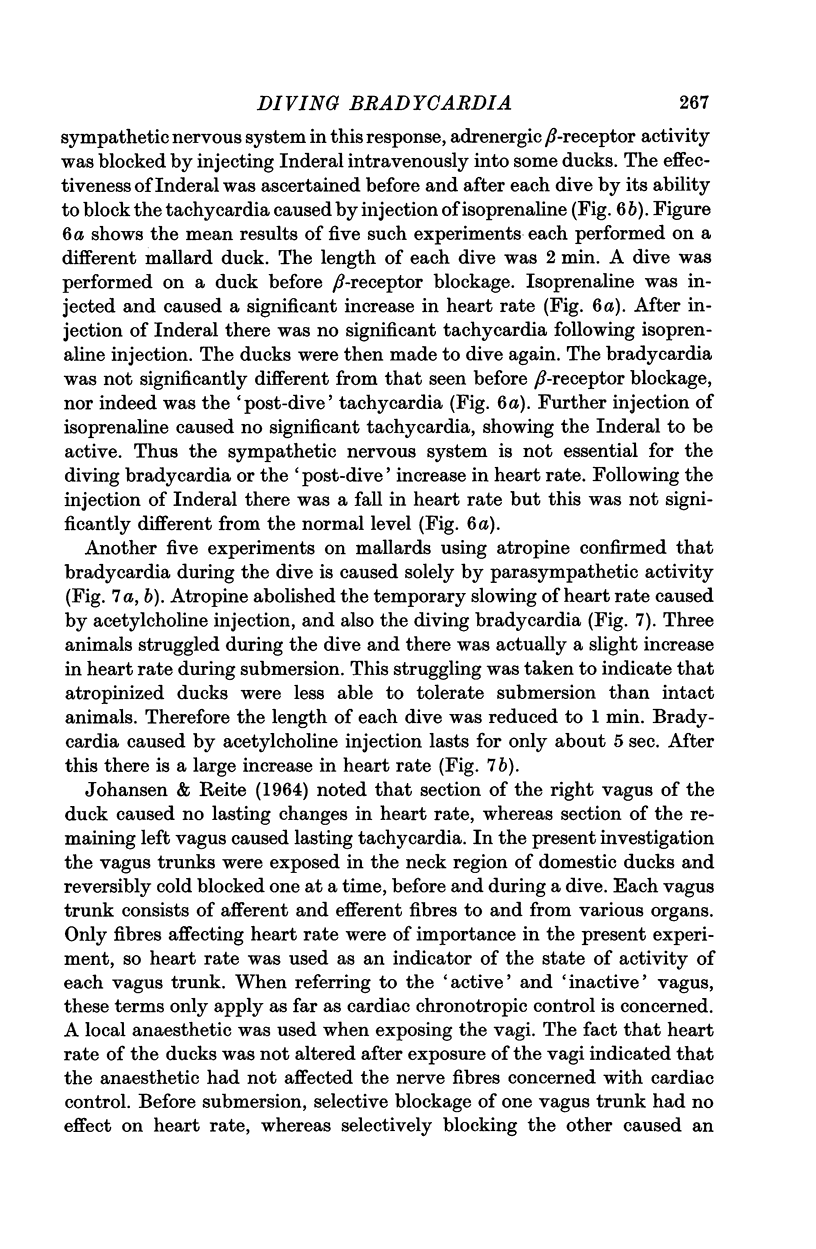





Selected References
These references are in PubMed. This may not be the complete list of references from this article.
- AMOROSO E. C., SCOTT P., WILLIAMS K. G. THE PATTERN OF EXTERNAL RESPIRATION IN THE UNANAESTHETIZED ANIMAL. Proc R Soc Lond B Biol Sci. 1964 Jan 14;159:325–347. doi: 10.1098/rspb.1964.0006. [DOI] [PubMed] [Google Scholar]
- ANDERSEN H. T. Factors determining the circulatory adjustments to diving. I. Water immersion. Acta Physiol Scand. 1963 Jun-Jul;58:173–185. doi: 10.1111/j.1748-1716.1963.tb02639.x. [DOI] [PubMed] [Google Scholar]
- ANDERSEN H. T. Factors determining the circulatory adjustments to diving. II. Asphyxia. Acta Physiol Scand. 1963 Jun-Jul;58:186–200. doi: 10.1111/j.1748-1716.1963.tb02640.x. [DOI] [PubMed] [Google Scholar]
- Andersen H. T. Physiological adaptations in diving vertebrates. Physiol Rev. 1966 Apr;46(2):212–243. doi: 10.1152/physrev.1966.46.2.212. [DOI] [PubMed] [Google Scholar]
- FEIGL E., FOLKOW B. Cardiovascular responses in "diving" and during brain stimulation in ducks. Acta Physiol Scand. 1963 Jan-Feb;57:99–110. doi: 10.1111/j.1748-1716.1963.tb02577.x. [DOI] [PubMed] [Google Scholar]
- JOHANSEN K., AAKHUS T. CENTRAL CARDIOVASCULAR RESPONSES TO SUBMERSION ASPHYXIA IN THE DUCK. Am J Physiol. 1963 Dec;205:1167–1171. doi: 10.1152/ajplegacy.1963.205.6.1167. [DOI] [PubMed] [Google Scholar]
- JOHANSEN K., REITE O. B. CARDIOVASCULAR RESPONSES TO VAGAL STIMULATION AND CARDIOACCELERATOR NERVE BLOCKADE IN BIRDS. Comp Biochem Physiol. 1964 Aug;12:479–487. doi: 10.1016/0010-406x(64)90150-1. [DOI] [PubMed] [Google Scholar]
- Jones D. R. Factors affecting the recovery from diving bradycardia in the frog. J Exp Biol. 1966 Apr;44(2):397–411. doi: 10.1242/jeb.44.2.397. [DOI] [PubMed] [Google Scholar]
- REITE O. B., KROG J., JOHANSEN K. DEVELOPMENT OF BRADYCARDIA DURING SUBMERSION OF THE DUCK. Nature. 1963 Nov 16;200:684–685. doi: 10.1038/200684b0. [DOI] [PubMed] [Google Scholar]


